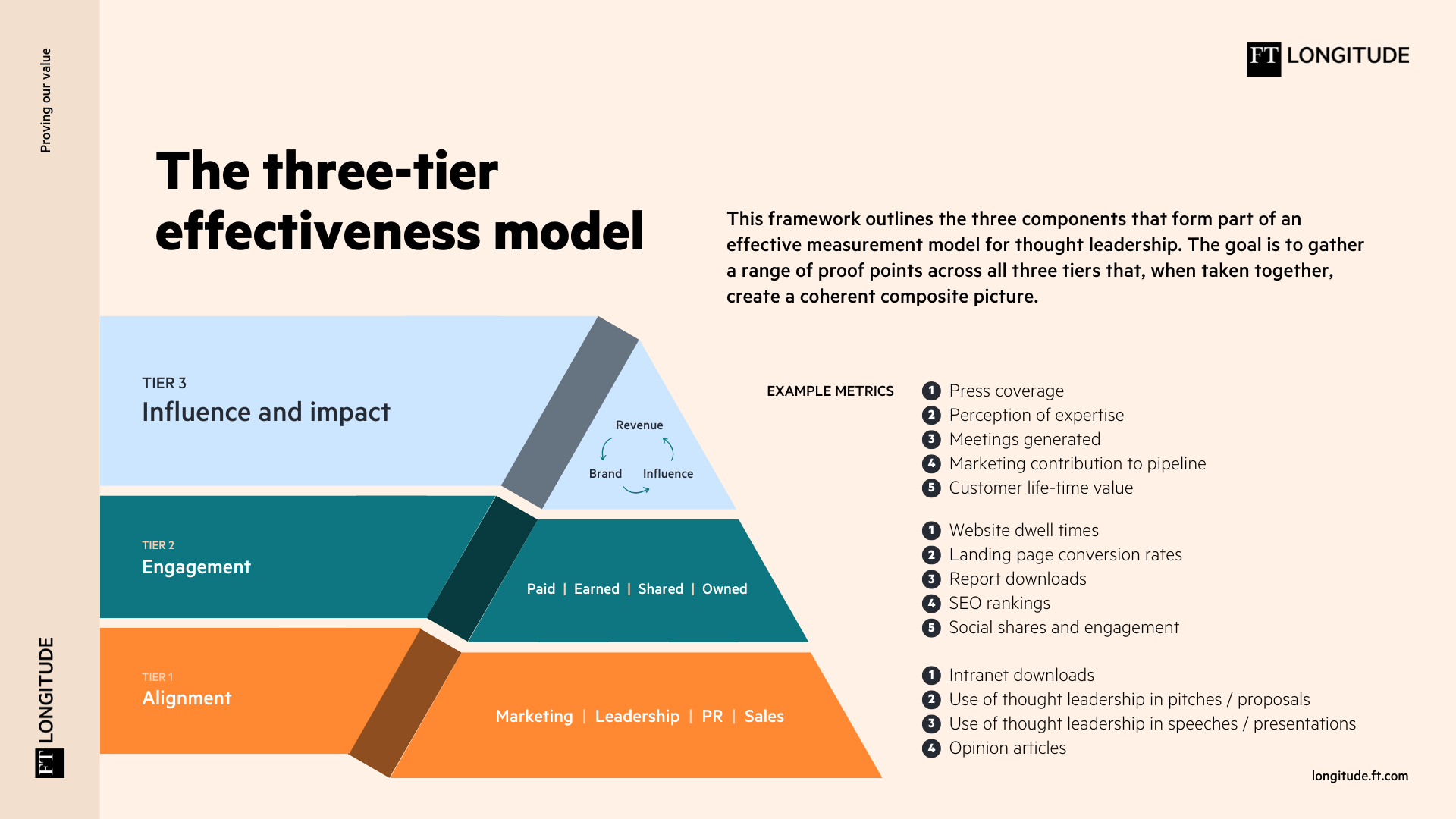Measuring success: A new approach to gauging thought leadership impact
Over the past decade, we have worked with hundreds of brands on their content and thought leadership. And if there is one message that comes up consistently, it is the difficulty of measuring the impact of these campaigns. As thought leadership becomes more widely used, with greater investment allocated to it, the problem of measurement is becoming more acute. We urgently need a better way to prove the value of the content that we, and the brands we represent, produce.
The challenge of measurement
Our sense of the problem was confirmed when we took a straw poll of senior marketers to gauge their views. An astonishing 98 per cent of respondents found measuring thought leadership difficult, while 82 per cent reported being unhappy with their current approach. These results point to a widespread problem in marketing departments, where the lack of ability to measure thought leadership has become a cause for concern.
A new blueprint for thought leadership measurement
Our report Proving our value: Measuring the value and effectiveness of thought leadership proposes a way forward to the measurement challenge. The report contains the marketing industry’s first ever framework for thought leadership measurement, and hopefully empowers marketers to reimagine the way they report on and measure their thought leadership activity.
At the heart of our framework are six key principles for measuring thought leadership effectiveness:
1. It starts with alignment
It is impossible to effectively measure the impact of your campaign if your stakeholders do not first agree on the overall objectives. Alignment is perhaps the single most important factor in determining how effectively you measure the value of your thought leadership investment.
2. Thought leadership objectives must link to business objectives
It is surprising how often content campaigns are not clearly linked to wider business objectives. Content needs to go to where it is needed most – and there has to be a clear link to business goals, which may range for dealing with digital disruption to maintaining market share in a mature product or service.
3. Don’t expect to have an impact without quality of thinking
The strength of ideas and original thinking are critical. Too many companies neglect to invest in quality and hope to rely on clever digital marketing to get content in front of audiences. This may work in the short term but, without underlying quality, the message will have no resonance or staying power.
4. Intermediate engagement metrics will not stand up to scrutiny
Marketers have become increasingly reliant on engagement metrics such as click-throughs, shares, downloads and bounce-backs. While these measurements are useful to a certain extent, they tell you very little about a content campaign or a brand’s wider impact.
5. Keep reputation building and sales activation in balance
Although both short-term sales activation and brand building are both important, companies must ensure that they have them in an appropriate balance. Without long-term investment in the brand (at which thought leadership excels), short-term activation tactics will, over time, become less effective.
6. Metrics should be qualitative and anecdotal – not just quantitative
There are plenty of quantitative metrics and analytics which can demonstrate the value of thought leadership but relying too heavily on these can be problematic without factoring in the context or narrative which drives them. Combining both quantitative measurements with qualitative feedback can help provide much deeper insight.
The three-tier effectiveness model
The report presents a three-tier measurement framework that marketers can customise for their own campaigns. The goal is to gather a range of evidence and proof points, including short term and longer-term, qualitative and quantitative.
- Alignment: It is essential to have buy-in from every relevant function in the business, as well as agreement about the overall goals. And importantly, alignment can be measured – if marketers spend more time on this, they are sure to have more successful campaigns.
- Engagement: Engagement metrics have value but they are often overemphasised. This is probably because, of the three tiers, this is the easiest to measure. It’s useful to measure engagement – and look across Paid, Earned, Social and Owned – but marketers should bear in mind that these metrics are not usually reliable indicators of the wider impact of your campaign.
- Influence and impact: This is the most important measure of a campaign’s value, encompassing influence, brand equity and commercial benefit. Choose your metrics wisely, ensuring that they are aligned with wider business objectives, and avoid being overambitious. Where possible, look for KPIs where there is a demonstrable link between content and outcome.

With so much confusion around how to measure thought leadership and growing pressure to demonstrate clear returns, a more sophisticated measurement model is very much needed. While some benefits of thought leadership can be realised in the short to immediate term, it is also important to take its longer-term value into consideration.
We hope that this new report and framework will mark the beginning of a rich and constructive conversation in the industry around best practices for proving the value of thought leadership. We believe it will not only help to better equip marketing teams to confront a major pressure point, but also encourage businesses to change the way they perceive thought leadership and the wider benefits it can bring.






 Back
Back

 Book a meeting
Book a meeting
 Book a meeting
Book a meeting

